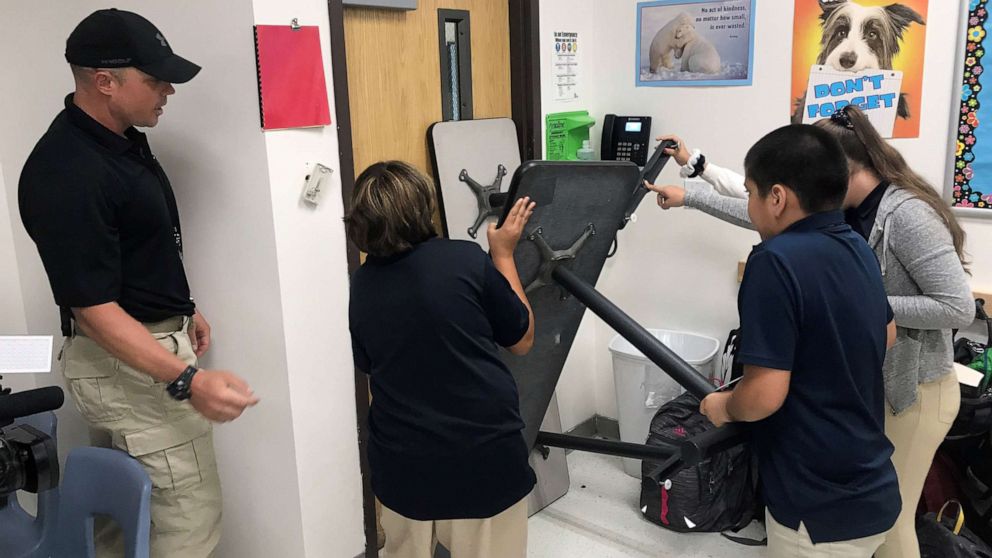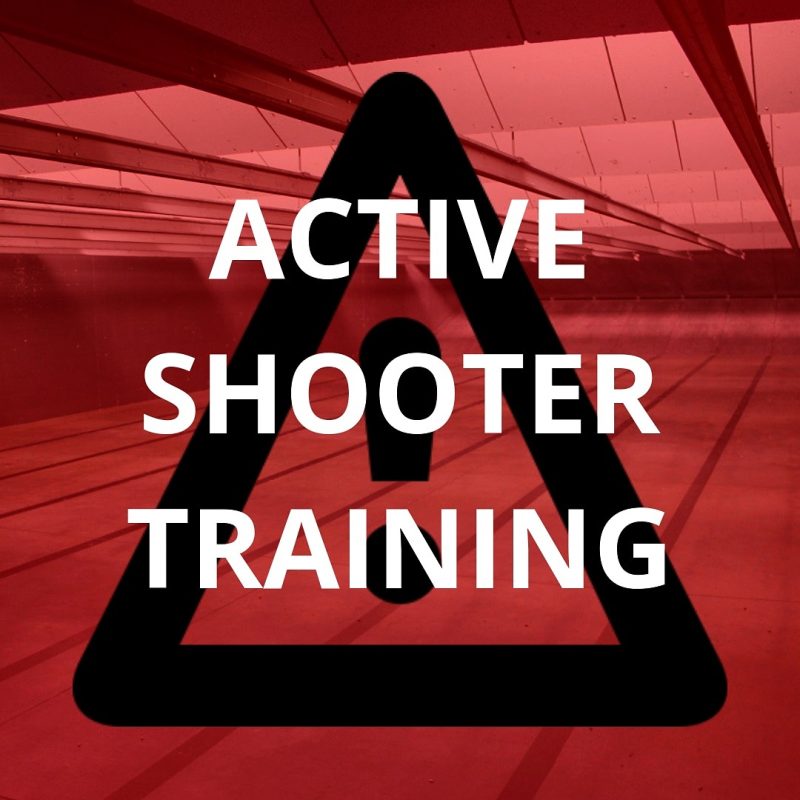Why Active Shooter Training Is Necessary for Workplace Security
Why Active Shooter Training Is Necessary for Workplace Security
Blog Article
Applying Energetic Shooter Training: Best Practices for Producing a Safe and Prepared Neighborhood Setting
As communities challenge the distressing reality of energetic shooter events, the implementation of detailed training programs becomes important. What are the important elements that can change a common training program into a durable model for community strength?

Understanding the Demand for Educating
In an age marked by boosting incidents of physical violence in public areas, comprehending the demand for energetic shooter training has never ever been more critical. The frequency of mass capturings throughout various environmentsâEUR" such as schools, workplaces, and shopping centersâEUR" emphasizes the urgency for individuals and organizations to be prepared for such emergency situations. Active shooter scenarios can unravel swiftly, leaving little time for individuals to react efficiently. Detailed training initiatives can furnish individuals with the understanding and abilities to respond emphatically.
Moreover, the emotional influence of physical violence on individuals and areas can not be overstated. Training promotes a sense of empowerment and preparedness, allowing people to feel more protected in their surroundings. It also promotes a culture of safety, where awareness and vigilance become essential components of every day life. The benefits of active shooter training extend beyond prompt response; they include boosting interaction procedures and improving overall precaution within organizations.
Secret Components of Effective Programs
Reliable energetic shooter training programs include numerous essential components that boost readiness and reaction capacities. Comprehensive curriculum development is important, guaranteeing that training material is pertinent, evidence-based, and tailored to the particular demands of the organization or area. This includes recognizing the characteristics of energetic shooter incidents and the psychological effect on people entailed.
2nd, sensible training circumstances should be utilized to replicate prospective circumstances, permitting individuals to exercise decision-making and feedback methods in a controlled atmosphere. These drills facilitate muscle mass memory and build self-confidence among individuals.
Third, an emphasis on interaction protocols is vital. Establishing clear lines of communication amongst law enforcement, emergency responders, and participants makes sure coordinated actions throughout a case. Normal updates and correspondence course aid keep interaction pathways clear and efficient.
4th, continuous assessment and responses systems ought to be integrated right into the training program - active shooter training. Assessing the effectiveness of training through participant responses and performance metrics enables constant improvement
Lastly, promoting a society of safety and preparedness within the community encourages vigilance and proactive steps, ensuring that individuals are not just qualified yet additionally involved in maintaining a protected setting.
Engaging Area Stakeholders

To effectively engage these stakeholders, it is vital to connect the objectives and benefits of the training. Hosting educational sessions can assist clear up the training's function, address issues, and outline the roles each stakeholder might play. Moreover, producing a stakeholder advisory board can facilitate recurring discussion, allowing for varied viewpoints and understandings to be incorporated right into the training program.
Building partnerships with community leaders and organizations is also critical. Their support can boost outreach initiatives, increase involvement, and make sure that training is tailored to the special demands of the neighborhood. Additionally, stakeholders can assist in distributing details and sources, reinforcing the message of safety and preparedness.
Eventually, engaging area stakeholders not just enhances the training initiative yet additionally cultivates a sense of possession amongst homeowners, leading to a much more resilient and educated neighborhood with the ability of responding effectively to prospective hazards.
Educating Delivery Techniques
Utilizing a range of training shipment techniques is necessary to fit the varied learning designs and demands of participants in active shooter training programs (active shooter training). Effective training can take numerous forms, including lectures, hands-on simulations, on the internet modules, and interactive workshops. Each informative post approach serves an unique purpose and can enhance the overall learning experience

On the internet components supply adaptability and ease of access, enabling individuals to learn at their very own rate. These can include videos, quizzes, and conversations to determine understanding. Interactive workshops motivate team discussions and problem-solving, advertising synergy and communication skills.
Integrating a combined strategy that integrates these approaches not just improves the training experience however likewise makes sure that individuals are much better prepared to react successfully in case of an energetic shooter situation (active shooter training). By addressing various finding out preferences, organizations can create an extra enlightened and receptive neighborhood
Constant Examination and Enhancement
Routine analysis and improvement of active shooter training programs are important to preserving their importance and effectiveness. As dangers advance, so should the methods and approaches used in training. Continual evaluation ensures that training web content shows the current intelligence on active shooter occurrences, incorporating lessons picked up from recent occasions and changing for emerging patterns.
To promote this process, companies should develop responses systems that include participant examinations, professional evaluations, and incident debriefs. Collecting data on individual efficiency during drills and exercises is crucial, as it highlights locations needing improvement and notifies future training sessions. Additionally, involving with regulation enforcement and emergency situation responders can offer valuable insights into the functionality and applicability of training protocols.
Routinely arranged evaluations of training products and techniques must be mandated, cultivating an atmosphere of technology and flexibility. Organizations needs to also motivate a society of recurring knowing, where team member feel encouraged to recommend changes based upon their experiences. By dedicating to constant assessment and improvement, company website companies not just enhance the efficiency of their energetic shooter training programs but likewise reinforce their overall dedication to safety and readiness within the neighborhood.
Final Thought
In verdict, effective application of active shooter training demands a comprehensive strategy that prioritizes neighborhood involvement and practical simulations. Inevitably, a commitment to ongoing training and improvement Recommended Reading cultivates a society of alertness and readiness, making certain a more secure environment for all area participants.
Report this page